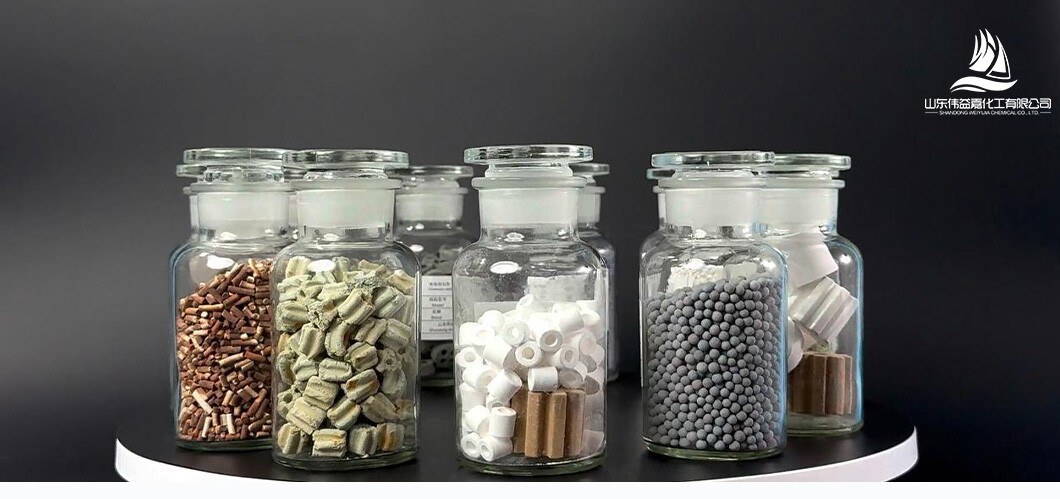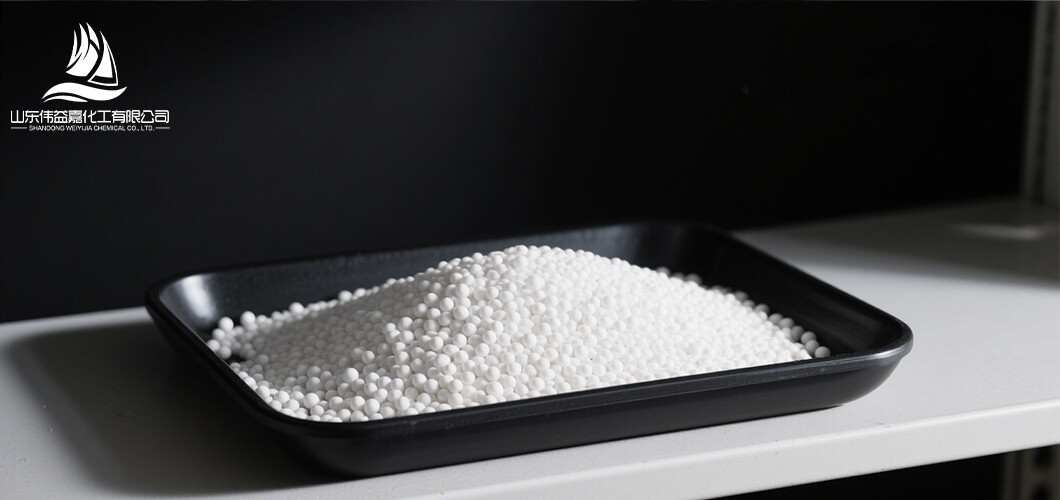BLOG
CONTENTS
The Unique Strengths of Precious Metal Catalysts

You may ask why Precious Metal Catalysts are special. They are not like regular metal or ceramic catalysts. These use rare metals such as platinum, palladium, or rhodium. You can find them in industries that need quick and steady chemical reactions. Their special features help you get better results and cleaner processes.
Key Takeaways
Precious metal catalysts, like platinum and palladium, help reactions go faster. They make things work better in many industries.
These catalysts are very good at making pure products. They create less waste, so they are great for making chemicals and medicines.
They do not rust or break down easily. This means they last a long time, even when it is very hot. This helps save money and stops work from being delayed.
Recycling precious metal catalysts is very important for the planet. It helps save money and keeps nature safe by needing less new mining.
New studies try to use less precious metals but keep them working well. This helps make things cleaner and cheaper for the future.
What Are Precious Metal Catalysts?

Definition and Types
Precious Metal Catalysts help chemical reactions happen quickly and safely. They use rare metals with special powers. You see them in many places, like oil refining, hydrogenation, catalytic combustion, organic synthesis, making medicine, and protecting the environment.
Here are the main metals used:
Platinum, palladium, and rhodium are used most often. These metals help chemical reactions work better.
Distinct Properties
Precious Metal Catalysts are special because of their unique traits. They make reactions faster and more efficient. Platinum is a noble metal, so it does not react easily. It has several oxidation states, which helps in many reactions. Platinum stays stable even in tough chemical conditions.
Rhodium does not rust easily. It works well at high temperatures and stays safe in many places. Palladium is now used instead of platinum for some jobs. It has strong catalytic activity and does not rust or break down.
Here are some important facts:
Platinum is the least reactive metal.
Platinum has four oxidation states, with +2 and +4 being common.
Rhodium does not rust and works very well.
Palladium is good for car catalysts and does not rust.
People use these metals because they make chemical work safer, faster, and cleaner.
Advantages of Precious Metal Catalysts
High Activity
Precious metal catalysts make reactions happen much faster. Metals like platinum and palladium have special surfaces. These surfaces grab and hold molecules. This helps the molecules react more easily. For example, platinum breaks down harmful gases in car exhausts. Palladium helps change phenol into cyclohexanone quickly. You get results faster and use less energy.
Selectivity
You want a catalyst that gives you the right product. Precious metal catalysts are very selective. They help you make purer products with fewer extra chemicals. Here are some important facts:
Precious metal catalysts are more selective than base metal catalysts.
Reactions are more efficient and make less waste.
The final product is much cleaner.
Palladium makes cyclohexanone, platinum makes cyclohexane, and ruthenium makes cyclohexanol in hydrogenation.
You can trust these catalysts to give you the results you want.
Thermal Stability
Catalysts need to work well in high heat. Precious metal catalysts stay strong even at very high temperatures. Platinum keeps working after being heated above 950 ℃ for a long time. Palladium on alumina also stays stable and active in tough conditions. This makes them great for hard jobs like car engines or chemical plants.
Longevity
You do not want to change your catalysts often. Precious metal catalysts last a long time because they do not break down easily. They keep working through many heating and cooling cycles. This saves you money and keeps your process running smoothly.
Versatility
Precious metal catalysts work in many different reactions. Their special electron structure lets them give or take electrons. This helps them work in both oxidation and hydrogenation. You find them in fuel cells, medicine, and more. Their high activity, selectivity, and heat resistance make them useful in many areas.
Sustainability
You care about the planet and want to use green chemistry. Precious metal catalysts help you do this. Scientists check how well these catalysts can be recovered and reused. For example:
Researchers study how to get platinum group metals from used car catalysts.
They use green chemistry rules to see how eco-friendly the process is.
They test different ways to find the best method with the least waste.
This helps you lower your impact on the environment.
Resistance to Oxidation
You need catalysts that do not rust or corrode. Precious metal catalysts resist oxidation much better than others. Here is a comparison:
You get a catalyst that stays strong and active in tough places.
Core-Shell Structure Benefits
Some new catalysts have a core-shell design. This means a precious metal shell covers another material. This design gives you many good things:
Recent studies show core-shell catalysts work better and last longer while using less precious metal. This means you get better results and save money.
Precious metal catalysts have many strengths. They help you get faster, cleaner, and more reliable chemical reactions in many industries.
Applications of Precious Metal Catalysts

Automotive Emissions
Precious Metal Catalysts help cars and trucks pollute less. They change bad gases from engines into safer ones. Platinum, palladium, and rhodium work inside catalytic converters. These systems clean the air by removing nitrogen oxides and carbon monoxide. Diesel oxidation and three-way catalysts keep vehicles cleaner. The EPA and other groups make strict rules. Automakers use new catalytic technology to protect the environment.
Did you know? Since the 1970s, these catalysts have helped lower engine pollution and made air cleaner everywhere.
Chemical Manufacturing
Chemical plants use these catalysts to make things like ammonia and methanol. They help reactions happen faster and make important chemicals for fertilizers and fuels. Palladium-based and ruthenium-based catalysts make methanol and ammonia quickly. Their high activity and selectivity mean you get more product and less waste. Here is a look at how different catalysts work in chemical manufacturing:
Pharmaceuticals
These catalysts help make medicines safer and cleaner. They help create active pharmaceutical ingredients and intermediates. Precious metal catalysts allow for selective reactions. This means you get purer drugs and fewer byproducts. New methods like asymmetric hydrogenation and cross-coupling make drug production greener. You see less waste and better processes in pharmaceutical manufacturing.
These catalysts help make APIs.
They support greener chemical processes.
You get better results with less harm to the environment.
Green Technologies
You find these catalysts in fuel cells and water splitting systems. They help make clean energy by speeding up reactions and lowering energy needs. Platinum and other precious metals stay stable for a long time, even in tough conditions. You get better hydrogen production and fuel cell performance. Here is how they help green technologies:
Tip: Recycling these metals saves money and helps keep a steady supply for future green technology projects.
Challenges and Future Directions
Cost and Scarcity
Precious metal catalysts cost a lot more than others. These metals are rare and hard to get. Their prices change quickly. For example:
Platinum prices went from $915.89 to $1,594.00 last year.
Rhodium reached up to $8,100.00.
Mining and refining these metals takes lots of work. More industries use precious metal catalysts now. This makes demand go up. It gets harder for companies to keep costs low and supplies steady.
Note: High prices and not enough supply can slow new projects or make products cost more.
Recycling Strategies
Recycling used catalysts helps solve the scarcity problem. Many companies use chemical and physical ways to get metals back. These ways include:
Pyrometallurgy uses high heat to get pure metals.
Advanced leaching and separation pull metals from old catalysts.
Membrane technologies help make metals more pure.
Fenton-like oxidation boosts how much metal is recovered.
Recycling has many good points. It uses less energy and makes less waste. It also lowers costs. Recycling helps the environment by needing less new mining. You help make the process greener when you recycle.
Research Trends
Scientists work to make catalysts cheaper and better for the planet. New research tries to use less precious metal but keep good performance. Some teams use carbon from plant waste to support palladium. This cuts how much palladium is needed by 100 times. The catalyst still works well. It also lowers the risk of contamination, which matters for medicine.
Demand for precious metal catalysts will keep growing. New rules for cleaner air and better products push industries to find smarter solutions. You help by choosing and supporting greener catalyst technologies.
You can see that Precious Metal Catalysts work really well and last a long time. They help make the air cleaner, medicines safer, and energy greener.
About 62% of these catalysts are used in making chemicals and refining.
Almost half are used to help the environment in green ways.
Over 21% are important for making medicines.
Scientists are using computers to help design better and greener catalysts. You will see new and smarter ideas in the future.
FAQ
What makes precious metal catalysts different from regular catalysts?
Precious metal catalysts work faster than regular ones. They last longer and do not rust easily. They can handle high heat without breaking down. You use less energy with them. They help make cleaner products. These metals help you make things safer.
Can you recycle precious metal catalysts?
You can recycle these catalysts. Companies use heat or chemicals to get the metals back. Recycling helps save money. It also protects the environment. Recycling means less waste goes into landfills.
Where do you see precious metal catalysts used most?
You find these catalysts in cars and chemical plants. They are also used in medicine factories. They clean car exhaust and help make fuels. They help make medicines too. You see them in green energy projects like fuel cells.
Are precious metal catalysts safe to use?
People use these catalysts safely in special places. Workers follow safety rules when handling them. The metals stay inside machines during reactions. You do not touch the metals yourself.
